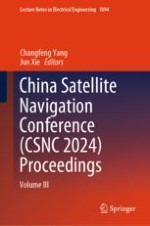2024 | OriginalPaper | Buchkapitel
Assessment About Parameters Selection Strategy of ECOMC Solar Radiation Pressure Model for BDS-3 Satellites During the Earth Eclipsing Period
verfasst von : Renlong Wang, Jianhua Cheng, Hui Li, Guojian Sun, Xitie Lu
Erschienen in: China Satellite Navigation Conference (CSNC 2024) Proceedings
Verlag: Springer Nature Singapore
Aktivieren Sie unsere intelligente Suche, um passende Fachinhalte oder Patente zu finden.
Wählen Sie Textabschnitte aus um mit Künstlicher Intelligenz passenden Patente zu finden. powered by
Markieren Sie Textabschnitte, um KI-gestützt weitere passende Inhalte zu finden. powered by
